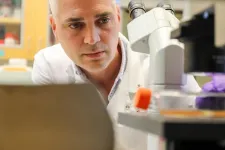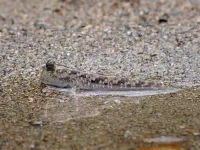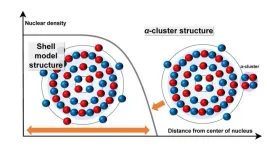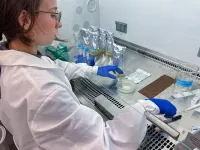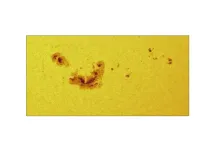(Press-News.org)
Direct air capture was identified as one of the ‘Seven chemical separations to change the world’. This is because although carbon dioxide is the main contributor to climate change (we release ~40 billion tons into the atmosphere every year), separating carbon dioxide from air is very challenging due to its dilute concentration (~0.04%).
Prof Ian Metcalfe, Royal Academy of Engineering Chair in Emerging Technologies in the School of Engineering, Newcastle University, UK, and lead investigator states, “Dilute separation processes are the most challenging separations to perform for two key reasons. First, due to the low concentration, the kinetics (speed) of chemical reactions targeting the removal of the dilute component are very slow. Second, concentrating the dilute component requires a lot of energy.”
These are the two challenges that the Newcastle researchers (with colleagues at the Victoria University of Wellington, New Zealand, Imperial College London, UK, Oxford University, UK, Strathclyde University, UK and UCL, UK) set out to address with their new membrane process. By using naturally occurring humidity differences as a driving force for pumping carbon dioxide out of air, the team overcame the energy challenge. The presence of water also accelerated the transport of carbon dioxide through the membrane, tackling the kinetic challenge.
The work is published in Nature Energy and Dr Greg A. Mutch, Royal Academy of Engineering Fellow in the School of Engineering, Newcastle University, UK explains, “Direct air capture will be a key component of the energy system of the future. It will be needed to capture the emissions from mobile, distributed sources of carbon dioxide that cannot easily be decarbonised in other ways.”
“In our work, we demonstrate the first synthetic membrane capable of capturing carbon dioxide from air and increasing its concentration without a traditional energy input like heat or pressure. I think a helpful analogy might be a water wheel on a flour mill. Whereas a mill uses the downhill transport of water to drive milling, we use it to pump carbon dioxide out of the air.”
Separation processes
Separation processes underpin most aspects of modern life. From the food we eat, to the medicines we take, and the fuels or batteries in our car, most products we use have been through several separation processes. Moreover, separation processes are important for minimising waste and the need for environmental remediation, such as direct air capture of carbon dioxide.
However, in a world moving towards a circular economy, separation processes will become even more critical. Here, direct air capture might be used to provide carbon dioxide as a feedstock for making many of the hydrocarbon products we use today, but in a carbon-neutral, or even carbon-negative, cycle.
Most importantly, alongside transitioning to renewable energy and traditional carbon capture from point sources like power plants, direct air capture is necessary for realising climate targets, such as the 1.5 °C goal set by the Paris Agreement.
The humidity-driven membrane
Dr Evangelos Papaioannou, Senior Lecturer in the School of Engineering, Newcastle University, UK explains, “In a departure from typical membrane operation, and as described in the research paper, the team tested a new carbon dioxide-permeable membrane with a variety of humidity differences applied across it. When the humidity was higher on the output side of the membrane, the membrane spontaneously pumped carbon dioxide into that output stream.”
Using X-ray micro-computed tomography with collaborators at UCL and the University of Oxford, the team were able to precisely characterise the structure of the membrane. This enabled them to provide robust performance comparisons with other state-of-the-art membranes.
A key aspect of the work was modelling the processes occurring in the membrane at the molecular scale. Using density-functional-theory calculations with a collaborator affiliated to both Victoria University of Wellington and Imperial College London, the team identified ‘carriers’ within the membrane. The carrier uniquely transports both carbon dioxide and water but nothing else. Water is required to release carbon dioxide from the membrane, and carbon dioxide is required to release water. Because of this, the energy from a humidity difference can be used to drive carbon dioxide through the membrane from a low concentration to a higher concentration.
Prof Metcalfe adds, “This was a real team effort over several years. We are very grateful for the contributions from our collaborators, and for the support from the Royal Academy of Engineering and the Engineering & Physical Sciences Research Council.”
Reference: Separation and concentration of carbon dioxide from air using a humidity-driven molten-carbonate membrane. I.S. Metcalfe, G.A. Mutch, E.I. Papaioannou, S. Tsochataridou, D. Neagu, D.J.L. Brett, F. Iacoviello, T.S. Miller, P.R. Shearing, P.A. Hunt. Nature Energy. DOI: 10.1038/s41560-024-01588-6
END
New research led by Oregon Health & Science University reveals a promising approach to developing a universal influenza vaccine — a so-called “one and done” vaccine that confers lifetime immunity against an evolving virus.
The study, published today in the journal Nature Communications, tested an OHSU-developed vaccine platform against the virus considered most likely to trigger the next pandemic.
Researchers reported the vaccine generated a robust immune response in nonhuman primates that were exposed ...
Okinawa’s mangrove forests are home to many animal species, from crabs to kingfishers; they host a diverse ecosystem teeming with life. Among the quirkier residents living there is “Minami-Tobihaze” — the barred mudskipper. “They are fish, but they can walk and live partly on land,” says Dr. Fabienne Ziadi-Künzli from the Nonlinear and Non-equilibrium Physics Unit, who is the first author of a study on mudskipper anatomy, which was recently published in the Journal of Anatomy.
Adapting to a new life
The barred mudskipper, scientifically called Periophthalmus argentilineatus, has more than just one oddity. Their eyes ...
The world around us is made up of particles invisible to the naked eye, but physicists continue to gain insights into this mysterious realm. Findings published in Physical Review C by Osaka Metropolitan University researchers show that the nuclear structure of an atom likely changes depending on the distance the protons and neutrons are from the center of the nucleus.
OMU graduate student Maito Okada, Associate Professor Wataru Horiuchi, and Professor Naoyuki Itagaki from the Graduate School of Science compared calculations using theoretical models with existing experimental data to determine whether titanium-48, the most common isotope of titanium with 22 protons and 26 neutrons, ...
Ever hear the old adage that time flies when you’re having fun? A new study by a team of UNLV researchers suggests that there’s a lot of truth to the trope.
Many people think of their brains as being intrinsically synced to the man-made clocks on their electronic devices, counting time in very specific, minute-by-minute increments. But the study, published this month in the latest issue of the peer-reviewed Cell Press journal Current Biology, showed that our brains don’t work that way.
By analyzing changes in brain activity patterns, the research team ...
Photocatalytic hydrogen evolution from water is a key technology for achieving sustainable hydrogen production. However, the direct impact of the microscopic structure of interfacial water molecules on photocatalytic reactivity remains unexplored. In this study, the crucial roles of interfacial hydrogen bond structure and dynamics, as well as the optimal interfacial water environment for promoting H2 evolution were uncovered. These findings provide molecular-level insights that can guide the design of interfacial water conditions to enhance photocatalytic performance.
Hydrogen production via photocatalytic water splitting is a sustainable ...
Mill Valley, CA – July 10, 2024 – The SynGAP Research Fund 501(c)(3) announces a $190,636 grant, for work to be done in 2024 and 2025, to Professor Janos Zempleni, PhD of the University of Nebraska-Lincoln, to establish data required for regulatory approval for his novel treatment using an engineered version of naturally-occurring particles called exosomes. His first grant from SRF established the engineered changes required to accumulate exosomes in the brain. SRF is pleased to support the continued development of a non-invasive and targeted delivery system for therapeutics ...
DALLAS, July 18, 2024 — Diet-related diseases account for 1 in 5 deaths around the world[1] and unsustainable industrial agricultural practices threaten to compromise the health of the planet.[2] While emerging science expands our knowledge of food composition, society still understands little about the tens of thousands of components found in food.
The American Heart Association is facilitating a new research fellowship program from the Periodic Table of Food Initiative (PTFI) with support from The Rockefeller Foundation. The program, called Good Food Fellows, aims to train a new ...
URBANA, Ill. – Creating fertilizers from organic waste can help reduce the consumption of fossil fuels and promote sustainable production. One way of doing this is through hydrothermal liquefaction (HTL), which converts biomass into biocrude oil through a high-temperature, high-pressure process. Two studies from the University of Illinois Urbana-Champaign explore the use of a fungal treatment to convert the leftover wastewater into fertilizer for agricultural crops.
“HTL uses wet biomass from organic sources such as swine manure or food waste. The process yields wastewater, called hydrothermal liquefaction aqueous phase (HTL-AP), which is usually discarded. We ...
There is no difference in live birth rates between time-lapse imaging and other standard approaches used in in-vitro fertilisation (IVF) for embryo incubation and selection prior to implantation, according to the results of the largest trial of its kind.
The randomised controlled trial looked at IVF outcomes in the UK and Hong Kong. The results, published today in The Lancet, provide much-needed evidence that using time-lapse imaging (TLI) does not improve treatment outcomes for someone undergoing fertility treatment.
Time-lapse imaging is a technique ...
Early riser! The Sun is already starting its next solar cycle – despite being halfway through its current one
Royal Astronomical Society press release
RAS PR 24/21 (NAM 7)
Embargoed until 00:01 BST on Friday 19 July 2024
The first rumblings of the Sun's next 11-year solar cycle have been detected in sound waves inside our home star – even though it is only halfway through its current one.
This existing cycle is now at its peak, or 'solar maximum' - which is when the Sun’s magnetic field flips and its poles swap places - until mid-2025.
It affects ...
